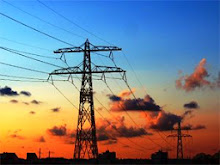Europe could get between 13% and 17% of its electricity needs from offshore wind turbines in by 2030, according to the the European Wind Energy Association (EWEA).
It reports that the market for onshore wind grew by an average 32% per year from 1992-2004, “and what the wind energy industry has achieved on land can be repeated at sea”.
But it adds that to hit the target 150 GW of offshore power will need co-ordinated action from the EC, EU governments, regulators, grid operators and the wind industry.
Those targets are for offshore wind power capacity to grow from 1.9 GW in 2009 to 40 gigawatts by 2020 and 150 GW by 2030.
Offshore installations, said by the EWEA to be “vital for Europe’s future”, currently account for just 0.2% of Europe’s electricity demand.
Offshore projects with 100 gigawatts of capacity have been proposed or are being developed, “and if realised, would produce 10% of the EU’s electricity whilst avoiding 200 million tonnes of CO2 emissions each year.”
But it adds that to hit the target 150 GW of offshore power will need co-ordinated action from the EC, EU governments, regulators, grid operators and the wind industry.
Those targets are for offshore wind power capacity to grow from 1.9 GW in 2009 to 40 gigawatts by 2020 and 150 GW by 2030.
Offshore installations, said by the EWEA to be “vital for Europe’s future”, currently account for just 0.2% of Europe’s electricity demand.
Offshore projects with 100 gigawatts of capacity have been proposed or are being developed, “and if realised, would produce 10% of the EU’s electricity whilst avoiding 200 million tonnes of CO2 emissions each year.”
Source: The New Civil Engineer



No comments:
Post a Comment